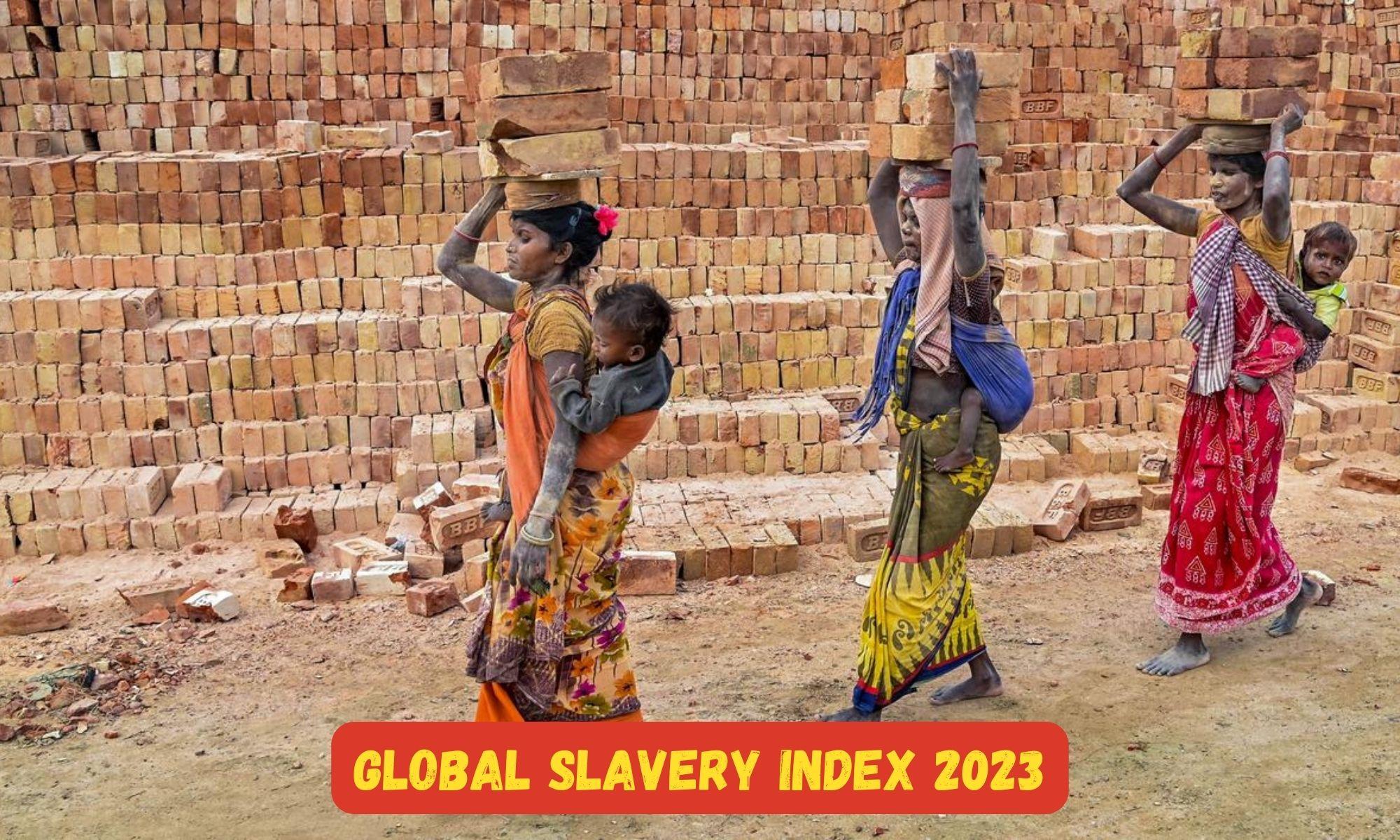About Global Slavery Index 2023
The fifth edition of the Global Slavery Index provides a global overview of modern slavery and is based on the 2022 estimates. The index is created by Walk Free, a human rights organization, and is based on data from the Global Estimates of Modern Slavery, produced by the International Labour Organization (ILO), Walk Free, and International Organization for Migration (IOM).
Buy Prime Test Series for all Banking, SSC, Insurance & other exams
Global Slavery Index 2023: Findings
There are three sets of key findings:
- The countries with the highest prevalence of modern slavery include North Korea, Eritrea, Mauritania, Saudi Arabia, Turkey, and Tajikistan.
- The countries with the lowest prevalence include Switzerland, Norway, Germany, Netherlands, and Sweden.
- The countries with the highest number of people living in modern slavery include India, China, North Korea, Pakistan, Russia, and Indonesia.
Global Slavery Index 2023: Modern slavery
Modern Slavery refers to situations of exploitation that a person cannot refuse or leave due to threats, violence, coercion, deception, or abuses of power.
- It encompasses a range of abuses, such as forced labor, forced marriage, debt bondage, sexual exploitation, human trafficking, slavery-like practices, forced or servile marriage, and the sale and exploitation of children.
Global Slavery Index 2023: Why in the News?
The Walk Free Foundation recently released a report titled ‘The Global Slavery Index 2023’ which serves to spotlight the escalating occurrences of modern slavery globally. The report reveals an alarming 25% surge in the number of individuals living in these bleak conditions over the past five years, totaling at 50 million people worldwide.
Global Slavery Index 2023: G20 Nations and their Role in Crisis
An important aspect that merits attention in the report is that it cites the G20 countries as significantly contributing to the further exacerbation of this crisis. Such nations play a crucial role through their trade activities and global supply chains. The report highlights that some of the top countries in the G20, including India, China, Russia, Indonesia, Turkey, and the US, display a high number of individuals suffering from forced labor, adding to the severity of the situation.
What are the Key Findings from the Global Slavery Index 2023?
- The Global Slavery Index 2023 indicates an estimated 50 million individuals worldwide were living in modern slavery at any time in 2021, up 10 million individuals since 2016, implying that one out of every 160 people worldwide is a modern slavery victim.
- The report ranks 160 countries by their modern slavery prevalence per 1000 people, with North Korea, Eritrea, and Mauritania having the highest prevalence and Switzerland, Norway, and Germany having the lowest.
- The Asia and Pacific regions are home to the majority of individuals living in modern slavery, with India having a prevalence of 8 (the estimated percentage of the population living in modern slavery per 1000 people).
What are the Contributing Factors to the Rise in Modern Slavery?
The report identifies climate change, armed conflict, weak governance, and health emergencies such as the COVID-19 pandemic as contributing factors to the growth in modern slavery. G20 nations account for more than half of all individuals living in modern slavery, primarily due to the importation of goods worth $468 billion from countries with weak labor protection, exacerbating forced labor situations.
What is the Role of Global Supply Chains?
Complex and unclear global supply chains that involve sourcing raw materials, manufacturing, packaging, and transportation are deeply intertwined with forced labor. The report indicates the importation of high-risk products, such as electronics, textiles, palm oil, and solar panels, and their connection to human trafficking, forced labor, and child labor. G20 countries collectively import billions of dollars worth of textiles and apparel products at risk of utilizing forced labor every year.
What are the International Efforts and Challenges?
Despite the adoption of a goal to eradicate modern slavery, forced labor, and human trafficking by 2030, the report highlights a substantial increase in the number of individuals trapped in modern slavery and a lack of progress in government action. The report attributes the 10 million-person increase to various crises, including conflicts, environmental degradation, assaults on democracy, global rollback of women’s rights, and the COVID-19 pandemic’s economic and social impacts.
Global Slavery Index 2023: Recommendations
The Global Slavery Index recommends implementing stronger measures and legislations to prevent governments and businesses from sourcing goods and services linked to modern slavery. The report advises embedding anti-slavery measures in climate change sustainability plans, raising awareness to children, tightening regulations around child marriage, and implementing transparency in value chains.
What is India’s Stance on Modern Slavery?
India adopted legislative policies such as the Bonded Labour Abolition Act of 1976, which got amended in 1985 to include contract and migrant workers, and the Central scheme for Rehabilitation of Bonded Labour, to prevent modern slavery. The Supreme Court ruled against non-payment of minimum wages as “forced labor” under Article 23 of the Constitution. Nonetheless, legal loopholes and government corruption pose significant challenges to effectively eradicate modern slavery in the country.
What is the Need of the Hour?
To eradicate modern slavery completely, the government needs to implement laws that criminalize all forms of slavery while safeguarding victims’ rights. Companies must ensure that their supply chains and operations are free from forced labor and human trafficking.
Civil society must raise awareness, lobby for change, and support survivors, while individuals need to educate themselves and advocate for transparency from companies they buy from or invest in and report any suspected case of modern slavery. The country needs to conduct national surveys to identify and enumerate people in modern slavery conditions.
Find More Ranks and Reports Here



 Paris Olympics 2024 Medal Tally, India M...
Paris Olympics 2024 Medal Tally, India M...
 Which District of Madhya Pradesh is Famo...
Which District of Madhya Pradesh is Famo...
 EC Signs Electoral Cooperation Pact with...
EC Signs Electoral Cooperation Pact with...

